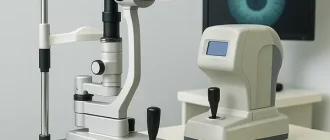Bloodshot eyes in children can be alarming for any parent. Understanding the root cause of this condition and addressing it promptly is essential for your child’s health and comfort. This article provides a detailed overview of the causes, symptoms, and practical solutions for bloodshot eyes in children.
Symptoms Requiring Medical Attention
This horizontal bar chart highlights symptoms that require prompt medical attention, with yellow or green discharge being the most critical at 90% and swelling around the eyes at 60%.
What Are Bloodshot Eyes?
Bloodshot eyes occur when the blood vessels in the sclera (the white part of the eye) become enlarged and visible. This condition can range from mild redness to severe irritation, often accompanied by other symptoms such as itching, swelling, or discharge.
Common Causes of Bloodshot Eyes in Children
1. Allergies
- Explanation: Exposure to allergens like pollen, pet dander, or dust can trigger allergic conjunctivitis, leading to redness and itching.
- Symptoms: Watery eyes, sneezing, or nasal congestion.
- Example: A 7-year-old from Phoenix, AZ, developed red eyes during spring due to high pollen levels.
2. Eye Strain
- Explanation: Prolonged use of digital devices can cause eye fatigue and dryness, resulting in redness.
- Symptoms: Dryness, blurred vision, and complaints of tired eyes.
Risk Factors of Gadget Use for Children’s Eye Health
This horizontal bar chart highlights the risks associated with prolonged gadget use. The risk of eye strain increases significantly when children use gadgets for more than 3 hours or without breaks.
3. Infections
- Explanation: Viral or bacterial conjunctivitis is a common cause of bloodshot eyes in children.
- Symptoms: Redness, swelling, yellow or green discharge.
- Example: A 10-year-old boy in Chicago, IL, experienced red, swollen eyes due to bacterial conjunctivitis after swimming in a public pool.
4. Irritants
- Explanation: Exposure to smoke, chlorine, or soaps can irritate the eyes.
- Symptoms: Immediate redness and discomfort.
5. Dry Eyes
- Explanation: Insufficient tear production can cause dryness and irritation.
- Symptoms: Burning sensation, redness, and sensitivity to light.
When to Seek Medical Attention
While bloodshot eyes often resolve on their own, certain cases warrant medical attention:
- Persistent redness lasting more than 24 hours.
- Severe pain or sensitivity to light.
- Swelling around the eyes.
- Yellow or green discharge.
Practical Solutions for Parents
1. Identify and Avoid Triggers
- Keep your home clean to minimize exposure to allergens. For example, use air purifiers to reduce pollen and dust in the air, and wash bedding regularly to eliminate dust mites.
- Limit screen time to reduce eye strain. Encourage breaks every 20 minutes by looking at an object 20 feet away for at least 20 seconds (the 20-20-20 rule).
2. Use Over-the-Counter Remedies
- Artificial tears can relieve dryness and irritation. Choose preservative-free options for sensitive eyes.
- Antihistamine eye drops may help with allergy-related redness. Consult your pharmacist to select age-appropriate products for children.
3. Maintain Hygiene
- Teach your child to avoid rubbing their eyes, which can spread germs and worsen redness. Provide tissues for gentle wiping if needed.
- Wash hands frequently to prevent infections, especially after playing outdoors or interacting with other children.
4. Apply Warm or Cold Compresses
- A warm compress can soothe bacterial infections. Soak a clean cloth in warm water, wring it out, and place it gently over the eyes for 5-10 minutes.
- A cold compress may reduce swelling and discomfort from allergies. Use a soft, chilled cloth and apply it to the eyes for a few minutes at a time to ease irritation.
Effectiveness of Treatment Methods for Bloodshot Eyes
| Method | Effectiveness (%) |
|---|---|
| Artificial Tears | 80% |
| Antihistamine Eye Drops | 75% |
| Warm Compress | 60% |
| Cold Compress | 70% |
| Hygiene Practices | 50% |
This chart highlights the effectiveness of different treatment methods for bloodshot eyes. Artificial tears are the most effective at 80%, while hygiene practices have a lower effectiveness of 50%.
Expert Opinions
Dr. Emily Hartman, Pediatric Ophthalmologist
“Bloodshot eyes in children are often treatable at home. However, recurrent redness should be evaluated by a specialist to rule out underlying conditions.”
Reyus Mammadli, Health Care Advisor
“Parents should focus on prevention by maintaining good hygiene and reducing environmental triggers. Quick interventions can prevent minor issues from escalating.”
Editorial Advice
Bloodshot eyes in children are common and usually not a cause for panic. By understanding the potential causes and taking preventative measures, parents can effectively manage this condition. If symptoms persist or worsen, consult a healthcare professional promptly.





